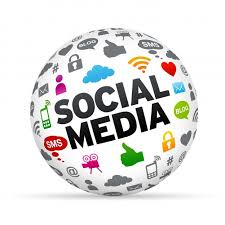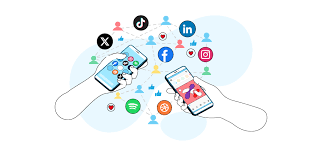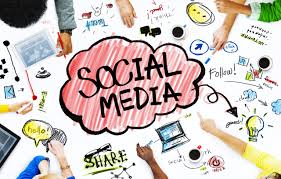Introduction
Social media has rapidly evolved from a novelty to a powerful force that touches every aspect of daily life. With billions of users worldwide, platforms like Facebook, Instagram, TikTok, Twitter, and LinkedIn have revolutionized the way we communicate, consume information, build businesses, and even perceive ourselves. This article explores the impact of social media, current trends, practical best practices, and how to maintain a healthy balance in a digital-centric world.

Table of Contents
1. The Evolution and Reach of Social Media 🌍
1.1 Origins and Transition
- Early 2000s: Platforms like MySpace and Friendster paved the way for social networking.
- Mid-late 2000s: Facebook, Twitter, and YouTube introduced new dimensions—status updates, microblogging, and user-generated video.
- 2010s–present: TikTok, Instagram Reels, and Clubhouse created immersive, short-form, and voice-first experiences.
1.2 Global Adoption & Reach
- Over 4.9 billion social media users globally in 2024.
- Nearly 60% of the world’s population connects online regularly.
- Consumes on average 2–3 hours per day—used for news, entertainment, communication, and shopping.
2. The Multifaceted Impact of Social Media
2.1 Personal Connections & Community
Social platforms empower users to nurture relationships, especially across distances. Family and friends share life moments via photos, videos, and stories. For niche communities—from hobbies to health conditions—social networks offer space for support, shared experiences, and connection across global borders.
2.2 Business Brand-building & Marketing
Social media marketing is integral to modern business strategies. Benefits include:
- Audience targeting: Advanced algorithms and demographics tools allow businesses to find precisely the right audience.
- Cost-effective advertising: From boosted posts to full-scale ad campaigns, most brands can reach millions with modest budgets.
- Influencer partnerships: Influencer marketing—leveraging creators trusted by niches—drives awareness and sales.
2.3 News, Trends & Culture
Platforms have dethroned traditional media in speed, but also in rumor spread. News breaks fast—yet so do fake news and misinformation. Virality often shapes pop culture, from viral challenges to political movements, globally and instantaneously.
2.4 Mental Health & Well‑Being
The effects of social media on mental health are mixed.
- Positive: Connection, support, creative expression and identity building
- Negative: Comparison anxiety, cyberbullying, and addiction
Research supports moderation and mindful use as critical for well‑being.
3. Key Social Media Trends in 2025
3.1 Short‑Form Video Content
TikTok’s meteoric rise has pushed its first principles—short, snappy, creative experiences—onto other platforms like Instagram Reels and YouTube Shorts. Brands and creators embrace micro-storytelling with bite-sized series and tutorials.
3.2 AI‑Driven Personalization
From content recommendations to chatbots and smart editing tools, artificial intelligence enhances user experiences. Utilities include:
- Auto‑captioning
- Facial enhancements
- Filters tailored to viewer preferences
3.3 Augmented Reality (AR) & Virtual Reality (VR)
AR filters and VR hangouts are gaining traction. Snapchat, Instagram, and Snapchat pioneered AR lenses, while VR-driven social worlds like Meta Horizon offer immersive digital co-presence.
3.4 Social Commerce
Shoppable posts and in-app purchasing have become mainstream. Instagram Checkout, TikTok Shopping, and Facebook Marketplace enable seamless buying journeys—from discovery to transaction—within apps.
3.5 Niche & Decentralized Platforms
A backlash against mega‑platforms has spurred audience migration to apps such as BeReal (authentic photo sharing), Discord (community‑focused chat), Mastodon, and Bluesky (federated, indie social networking).
4. SEO & Content Strategy on Social Media
4.1 Keyword‑Optimized Profiles
Use relevant keywords in your username, bio, and posts. For instance, a fitness coach might include “personal trainer”, “workout tips”, or “nutrition coach”.
4.2 Consistent Posting & Engagement
Algorithms reward activity. Posting frequency (e.g., daily Stories, weekly Reels), prompt replies to comments, and encouraging shares/commenters cultivates reach and rapport.
4.3 Multimedia & Accessibility
Diversify between images, videos, carousels, and text. Use captions and alt-text to reach wider audiences and meet accessibility standards.
4.4 Hashtags & Topic Tags
Smart use of hashtags can boost discovery.
- Brand‑specific (e.g.,
#NikeRunClub) and niche tags (e.g.,#PlantBasedEats) coexist. - Balanced use—5 to 10 relevant tags—trumps saturation or random trending tags.

4.5 Link Structuring & Bio Links
Posts on platforms like Instagram and TikTok often don’t allow embedded links—so use your bio link wisely. Change it regularly to reflect current campaigns or content (e.g., “👉 June webinar registration link in bio!”).
4.6 Video SEO
Optimize short‑form content with catchy captions, subtitles, and keywords. Tag trends (“#LifeHacks2025”, “#DIYHomeMakeover”) to signal algorithms and attract viewers.
5. Navigating Risks & Challenges
5.1 Privacy & Data Use
Platforms collect behavioral, geolocation, and transactional data. Users should:
- Frequently review privacy settings
- Limit app permissions
- Delete outdated posts or personal details
5.2 Misinformation & Fake Content
Combatting misinformation requires source checks. Be cautious with forwards, viral posts, or sensational claims. Reliable outlets, fact-checking sites, and date context help differentiate real from false.
5.3 Time Consumption & Digital Fatigue
Social media can disrupt productivity if not managed.
- Use time tracking apps
- Create usage limits
- Designate “no screen zones”—especially before bed
5.4 Cyberbullying & Harassment
Harassment targets individuals and communities. Report abuse, mute/block offenders, and support platforms with stronger anti‑bullying policies. Encourage respectful discourse in your networks.
6. Best Practices for Positive Social Media Use
6.1 Curate Your Feed
- Mute or unfollow negative/harmful content
- Follow creators that inspire, inform, or entertain positively
- Leverage “See First” algorithms for meaningful updates
6.2 Engage Authentically
Ask genuine questions. Host mini‑polls. Share real experiences. Engagement works best when transparent and human—beyond clickbait.
6.3 Diversify Platforms
Very presence on one platform limits reach.
- Instagram for visuals and lifestyle
- LinkedIn for professional thought-leadership
- TikTok for fun, viral content
- Twitter (or X) for trending voice and live updates
6.4 Educate Yourself
Stay informed:
- Follow privacy experts and watchdog groups
- Attend webinars on digital intentionality
- Explore non‑social media mental health resources
7. Case Studies: Success & Lessons Learned
7.1 Brand Example: Glossier
Beauty brand Glossier built community-first product lines by constantly engaging on Instagram and toothed transparency—from R&D to crowdsourced development. This cultivated trust and loyal customers.
7.2 Creator Example: A Fitness Influencer
A health coach used TikTok’s short‑form videos to share quick 60-second workouts. By optimizing titles (“5‑Min Home Abs”) and hashtags (#HomeWorkout), they doubled their follower base in months and monetized via affiliate programs and online coaching.
7.3 Crisis Example: Misinformation
False health rumors spread rapidly on major platforms in 2025, prompting WHO collaboration with networks like Facebook and TikTok to promote facts and prevent panic. It highlights the ongoing challenge of moderating harmful content.
8. The Future of Social Media
8.1 Move Toward Immersive Experiences
Expect a swing toward AR-powered shopping, interactive livestream shows, and VR-based social events—engaging consumers in 3D commerce and immersive storytelling.
8.2 Rise of Creator Economies
Platforms are expanding direct monetization tools—like subscriptions, badges, tips, and paid content—to support creators beyond ad revenue.
8.3 Platform Fragmentation
Trust and ownership issues drive users toward smaller, community‑centric, and decentralized platforms. Expect user data ownership and privacy-first networks to grow.
8.4 Regulation & Accountability
Governments are exploring digital safety laws: transparent ad disclosures, bans on addictive design elements for minors, and tighter data privacy protections from platforms.

Conclusion
Social media can be an incredible tool—for connection, creativity, and commerce. But as its role deepens, so does the responsibility for users, creators, platforms, and regulators to foster a safe, positive, and informed environment. By embracing mindful habits, diversifying content, staying aware of trends, and prioritizing digital health, we can unlock social media’s immense potential while mitigating its risks.
Let’s make 2025 the year social media becomes not just ubiquitous, but truly human-centered—empowering voices, nurturing communities, and enriching lives.
Read more:https://blog.nfds.xyz/wp-admin/post.php?post=185&action=edit

